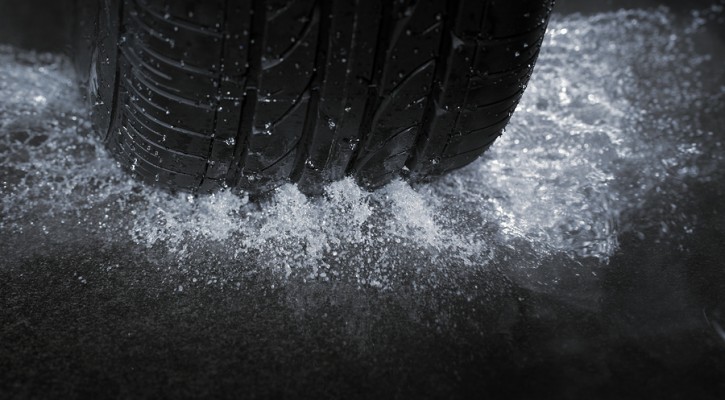
Ask The Traffic School Instructor: Hydroplaning
October 22, 2014
Question: Is there a difference between hydroplaning and skidding?
Answer: While the end result may be the same, the causes of skidding and hydroplaning are different.
Skidding
Skidding is caused by a slick road surface. Your greatest chances for skidding happen when it rains and the most dangerous time is within the first half-hour after it starts to rain. During dry periods, oil and other fluids drip and build up on the roadway. When it starts to rain and there’s a coating of water on the road, all of that oil rises up on top of the water creating a very slick surface. When you hit the brakes, the slick surface may not allow the tires to grip the road. After a heavy rain, all of the oil will be washed off the road.
Other surfaces that can cause skidding are gravel or dirt roads. On those surfaces, the tires aren’t on a flat, even surface. If you can imagine the tire’s surface resting on the small tips of a bunch of rocks rather than having full contact with a flat surface; the tires just don’t have enough grip and that makes it is easier to skid.
It’s important to know what kind of brakes you have on your car. If you have standard brakes, don’t hit the brakes when you start to skid. That can make matters worse. Just take your foot off the gas and concentrate on steering until you pass over the slick spot. If you have anti-lock brakes, they’re made to control your vehicle while skidding by rapidly applying and releasing the brakes multiple times per second. When applying anti-lock brakes, you may feel some fluttering in the brake pedal but that’s normal. Just keep an even pressure on the brakes to stop.
Hydroplaning
Hydroplaning is caused by standing water on the road. As the tires travel through the water, the water is too deep for the tire’s tread to squeeze out all the water and the tires can actually ride up on top of the of the water surface like water skis. At that point, your tires are no longer in contact with the road surface and you’re just along for the ride.
Hydroplaning can happen at speeds as low as 35 mph but it’s most dangerous at speeds above 55 mph. The best way to avoid hydroplaning is to avoid areas of standing water and, if you can’t avoid it, slow down before you enter the water.
If you’re hydroplaning, your tires are no longer in contact with the road. Don’t slam on the brakes! Take your foot off the gas and concentrate on trying to steer until your tires are back in contact with the road.
